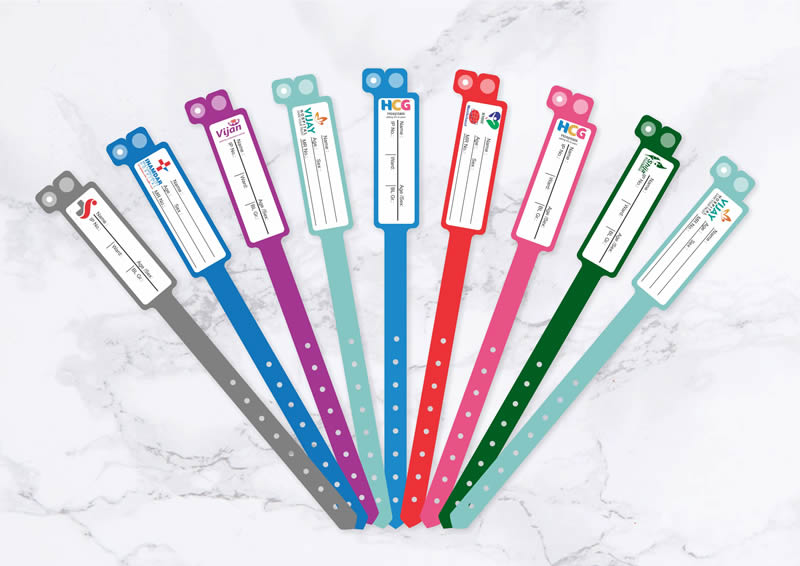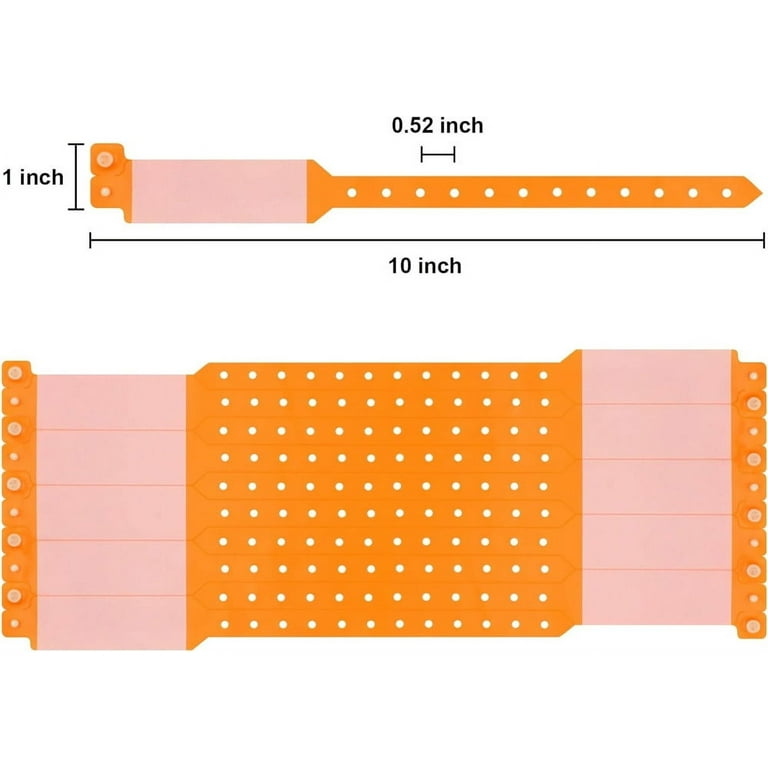Enhancing Security: The Importance of Individual Recognition Bands in Health Care
In the realm of healthcare, the efficacy of patient identification bands can not be overemphasized, as they offer as a basic guard versus misidentification and succeeding mistakes. As we discover the complex function of these bands, it ends up being obvious that their significance extends past plain recognition, elevating concerns about ideal techniques and future innovations in person security.
Introduction of Individual Identification Bands
Individual identification bands play an important function in guaranteeing the safety and precision of individual care in medical care settings. These bands, usually endured the wrist or ankle, act as a vital device for confirming client identification, consequently reducing the threat of errors in therapy, medicine administration, and various other healthcare treatments. Made from resilient products, client recognition bands typically consist of vital information such as the individual's name, date of birth, clinical record number, and barcodes or QR codes for scanning.
The execution of client recognition bands is important in numerous healthcare settings, consisting of health centers, outpatient facilities, and long-lasting care organizations. They add to a systematic technique in patient administration, making it possible for healthcare experts to promptly and accurately determine people, especially in high-pressure circumstances where speedy decision-making is essential.
In addition, using these bands is aligned with regulatory requirements aimed at improving individual security - Patient Identification Band. By making certain that each person's details is conveniently proven and conveniently obtainable, doctor can preserve a high standard of care, reduce the occurrence of damaging occasions, and promote a society of security within healthcare institutions
Advantages of Accurate Recognition
Precise identification is fundamental to enhancing person safety and security and care high quality in health care settings. It functions as the initial line of protection against errors that could lead to adverse person results. By guaranteeing that each client is correctly recognized with dependable means, such as person identification bands, doctor can dramatically lessen the risk of misidentification, which can bring about improper treatments, drug errors, and even medical mix-ups.
Furthermore, accurate individual identification promotes efficient interaction among medical care teams. When all team member can consistently recognize clients, they can share crucial details much more successfully, leading to far better coordination of care. This is specifically essential in emergency situation situations where timely treatments are essential.
In addition, accurate identification sustains conformity with regulatory criteria, thereby minimizing the risk of legal consequences for medical care facilities. It promotes depend on in between patients and health care providers, as clients really feel extra secure understanding that their identities are being secured.

Common Obstacles Dealt With
Making certain effective individual recognition in healthcare setups offers a range of difficulties that can endanger security and care top quality. Patients may show up in a state of complication or distress, making accurate identification tough.
An additional challenge is the dependence on human consider identification procedures. Health care experts might unintentionally neglect or misinterpret recognition methods, specifically in high-stress environments such as emergency departments. This can bring about errors, including the management of inaccurate therapies or medicines.
Technological problems likewise posture obstacles. Although electronic health record (EHR) systems are designed to improve client identification, system interruptions or customer mistakes can interfere with the procedure. Moreover, the physical design of patient ID bands can result in readability problems, particularly in instances where bands are damaged or obscured.
Last but not least, irregular training among staff regarding recognition methods can lead to gaps in knowledge and technique. Attending to these difficulties is vital for improving client safety and security and making certain that identification bands serve their desired function effectively.
Ideal Practices for Application
To effectively apply individual identification bands in medical care settings, companies should adopt a diverse method that focuses on training, standardization, and modern technology assimilation. Standardization includes developing clear procedures for the layout, application, and use recognition bands across all divisions. This guarantees uniformity and minimizes the danger of mistakes linked to differences in band types or labeling techniques.


Training is important for all healthcare team to ensure they recognize the value of accurate person identification, how to Visit Website appropriately apply and review identification bands, and the treatments to comply with in instance of inconsistencies. Normal workshops and refresher courses can strengthen this knowledge and promote a society of security.
Modern technology combination plays a crucial function in boosting the effectiveness of individual identification bands. Using barcode scanning or RFID modern technology can improve the recognition process, enabling real-time confirmation of patient identities. In addition, electronic health and wellness document systems should be configured to consist of signals for mismatches in between the recognition band and patient data.
Future Trends in Individual Safety
As healthcare remains to advance, the emphasis on client safety and security is most likely to heighten, driven by advancements in technology and a higher understanding of systemic threats. Arising trends indicate a shift towards even more incorporated systems that utilize data analytics, expert system, and artificial intelligence to boost patient identification processes. These technologies can assist determine prospective safety and security concerns prior to they rise, thereby minimizing errors associated with misidentification.
Furthermore, the application of blockchain innovation may reinvent exactly how patient data is safely shared among healthcare carriers, making certain that recognition bands are continually exact and updated. This will certainly not just improve individual security but also promote smooth interaction across multidisciplinary teams.

On top of that, the growing concentrate on individualized medication is anticipated to affect patient safety protocols. By integrating group and hereditary details right into recognition systems, healthcare professionals can tailor treatments better, lessening the dangers of damaging responses due to misidentification.
Conclusion
Finally, client identification bands act as an important element in enhancing safety within healthcare environments. By facilitating accurate patient recognition, these bands dramatically lower the threat of mistakes related to misidentification, improper therapies, and medicine administration. Despite challenges in implementation, adherence to try these out best techniques and the assimilation of emerging technologies can further boost their performance. Eventually, the continued focus on durable identification methods will certainly add to improved person results and overall safety and security in medical care settings.
In the world of healthcare, the efficiency of client recognition bands can not be overstated, as they offer as a fundamental guard against misidentification and succeeding errors.Individual recognition bands play a vital role in making certain the safety and precision of patient care in medical care settings. Made from long lasting products, client identification bands usually include necessary information such as the individual's name, day of birth, medical record number, and barcodes or QR codes for scanning.
By making sure that each patient is properly recognized through reputable methods, such as go to website patient identification bands, medical care providers can substantially decrease the risk of misidentification, which can lead to unsuitable therapies, medication errors, and even surgical mix-ups.
In final thought, person recognition bands serve as an important element in improving safety and security within medical care environments. Patient Identification Band.
Comments on “Exactly How Patient Identification Band Enhances Patient Security in Medical Setups”